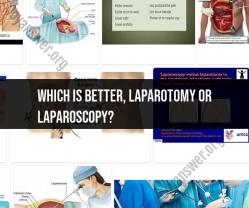How do you perform pulse oximetry?
Performing pulse oximetry is a simple and non-invasive way to monitor oxygen levels in the blood. Here's a step-by-step guide on how to perform pulse oximetry:
What You Need:
- A pulse oximeter device
- Clean hands
- Patient's finger (or other suitable body part)
Steps:
Prepare the Equipment:
- Ensure the pulse oximeter is clean and in working order.
- Check that the batteries are charged or replace them if necessary.
Prepare the Patient:
- Ensure the patient is comfortable and seated if possible.
- Make sure the patient's hand or finger is warm, as cold fingers can affect the accuracy of the reading.
Clean Your Hands:
- Wash your hands thoroughly to maintain hygiene.
Turn On the Pulse Oximeter:
- Press the power button on the pulse oximeter to turn it on.
Insert the Finger:
- Most pulse oximeters are designed to be used on the patient's finger. However, depending on the device, it can also be used on the earlobe or toe.
- Slide the patient's finger (or the appropriate body part) into the pulse oximeter probe.
Wait for the Reading:
- Within seconds, the pulse oximeter will display two important measurements:
- SpO2 (Oxygen Saturation): This is the percentage of oxygen in the patient's blood. A normal SpO2 reading is typically between 95% and 100%.
- Pulse Rate: This is the patient's heart rate, measured in beats per minute (bpm).
- Within seconds, the pulse oximeter will display two important measurements:
Record the Readings:
- Take note of the SpO2 and pulse rate readings provided by the pulse oximeter.
Interpret the Results:
- A normal SpO2 reading indicates that the patient is adequately oxygenated.
- If the SpO2 reading is significantly below 95%, it may indicate low oxygen levels (hypoxemia), and further medical attention may be necessary.
Remove the Probe:
- Gently remove the finger or body part from the pulse oximeter probe.
Turn Off the Pulse Oximeter:
- Press the power button to turn off the pulse oximeter when you're finished.
Clean the Pulse Oximeter:
- If the pulse oximeter is used on multiple patients, follow the manufacturer's instructions for cleaning and disinfecting it before and after each use.
Remember that while pulse oximetry is a valuable tool for monitoring oxygen levels, it is not a replacement for a comprehensive medical assessment. If you have concerns about a patient's oxygen levels or if readings are consistently outside the normal range, consult a healthcare professional for further evaluation and guidance.








